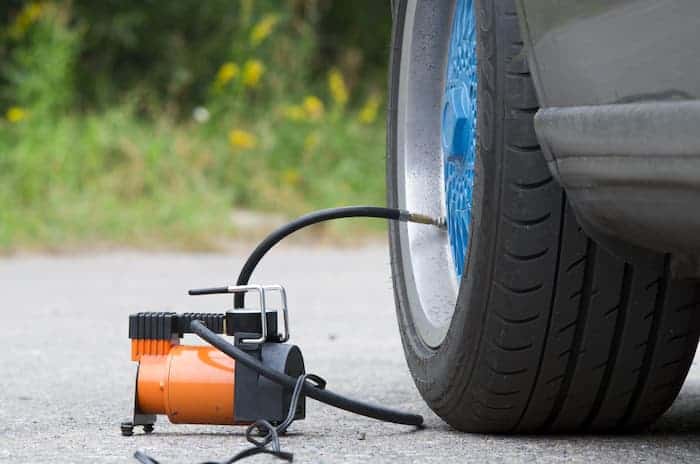This article will help you to learn how to wire 12V LED strip lights in car.
Lighting-producing semiconductors are called light-emitting diodes (LEDs). Semiconductors are fundamental electronic components consisting of silicon and other substances that permit certain patterns of electron (electrical current) flow. Diodes are “one-way valves” that only permit one direction of current to flow. The fact that they also create visible light is an intriguing characteristic. The cathode (negative lead) connects to the ground or (-) wire, and the anode (positive lead) connects to a positive power source.
In the world of electronics, light-emitting diodes (LEDs) are one of the most vital parts. Even though they have been there for a while, their utility in daily life has only increased in the last 10 to 15 years. This also applies to usage for illumination in vehicles and homes. The idea behind how LEDs operate is a semiconductor junction. In other words, they comprise a junction—or bridge—that creates a diode by joining two distinct materials, such as silicon and germanium.
Table of Contents
ToggleHow Do LED Stripes Produce Light
Light is a unique by-product of electricity flowing through diodes. The materials used to create them have an impact on the hue of the light that results. A growing number of businesses have improved them over time, and they now make inexpensive, attractive LEDs that can emit light in a range of colors.
But unlike ordinary light bulbs, LEDs truly operate at low voltage (say around 1.5 volts or so each). This means that to control the amount of current flowing, they must be utilized with a resistor. Otherwise, they soon lose energy. When LEDs are powered by car voltage, resistors are used (normally somewhere around 12V).
How do LED Light Strips Work

LED light strips function by being powered by the car power source (battery) that regulates the duration (and color) of the LEDs’ on and off cycles. Simple single-color LED strips can operate without a power source, but they are unable to have several color combinations or unique characteristics like dimming or pulsing in time to music. This is made feasible by an LED controller in more sophisticated light strips by using extremely quick switching on/off with separate wiring for each distinct RGB color.
Multiple RGB LEDs are equally spaced out along LED light strips, which also have resistors connected in parallel. When powered, the LED driver controller box sends a distinct on/off signal to each color. Various brightness levels and color combinations are made possible by this. Your eyes will perceive an LED as brighter the longer it is turned on. One hue will appear more noticeable if it is activated more frequently than the others. (For instance, you’ll notice a color mix that has bluer in it if blue is activated more frequently than red.)
Installing LED Light Strip in Your Car
Just a few key actions are required to install your LED strip lights. The good news is that it’s usually not that difficult! To make it correctly, it does take some time, but it is totally worth it!
You must make the following plans:
- Connect the controller (or lights) directly to a +12V and ground power source.
- Mount the light strips firmly.
- Test and verify connection.
Most of the time, there is no need to run wiring to the battery. Since LED lights consume comparatively little power, they can typically be wired into the factory audio or cigarette lighter outlet of most vehicles.
How to Wire 12V LED Lights in a Car
A cigarette lighter plug with an on/off switch is a common feature of sets. Even though using a cigarette lighter to power a set is simple, it’s not the best or neatest solution. It’s acceptable for short-term use though. Although cigarette socket power plugs are frequently included in LED car interior light sets, that’s not the greatest choice. As with the car stereo, you should ideally hardwire them to shut off with the ignition switch. The set must be hardwired to an accessory wire to receive a +12V supply that turns on or off with the ignition.
Usually, you can locate a wire for this in one of the following places:
- Behind the auto stereo (usually the first option)
- Wiring at the cigarette lighter socket
- Within the vehicle, at the fuse box
Where to find +12V accessory (“ACC”) wire

- Check the wire colors in your car
The12volt.com is a good place to look for your vehicle’s wiring color codes, according to experts. You’ll often find the wiring colors and diagrams for your car or truck.
- Test wiring until a suitable wire is found
You should use a digital test meter for this stage (as I mentioned earlier). The main cause is that not all wiring in new cars is 12V. In some cases, wiring or signal lines now have voltages lower than +12V.
Caution! You can’t see the true wire voltage with a basic test light and using one can damage the car. By accidently using a lower-voltage wire while using a test light, you run the risk of damaging or permanently damaging your LED lights. You might try removing the radio and inspecting the wiring while the ignition is in the ACC position until you locate +12V wires. To determine which are appropriate, retest with the ignition off.
- Tap off the fuse box
The fuse box in your car, which supplies electricity to the radio and your LED lights, is typically located in one of a few locations. (Above) either (below) under the lower driver’s side, close to the brake pedal, or under a panel in the dash itself. The fuses typically have labels in the owner’s manual. Connecting to a power supply at the fuse box is an additional choice. They are often located at the left side of the dashboard, either under a panel in the dashboard itself or close to the lower left-hand side of the interior. The owner’s manual for your car might help you identify which fuse is used for what. Most cars have one where you can draw power for the radio.
For adding LED lights, fuse box wiring adapters make it quite simple to tap off of a power circuit. After connecting the power line, you plug them in to replace the original fuse. If you want to tap off the fuse box, think about purchasing a fuse wiring adapter. They can make things so easy! When searching for an appropriate fuse without an owner’s manual, you can use a test meter to evaluate fuse power both with and without the ignition. The LED power cable is then connected using a fuse tap adapter or another type of connection.
Connecting the Wiring
When you’ve located a reliable supply of power, you will:
- Now connect the LED power wire,
- And ensure that the negative power wire is grounded.
LED stripes can be installed both inside and outside of your car for better beautification. While some drivers go as far installing LED stripes in their car’s hood, others install around their tire rims, undercarriage, and roof. Whichever location you choose to install your LED stripe, ensure you also restore your car’s headlight lenses using a headlight restoration kit for proper cleaning.




